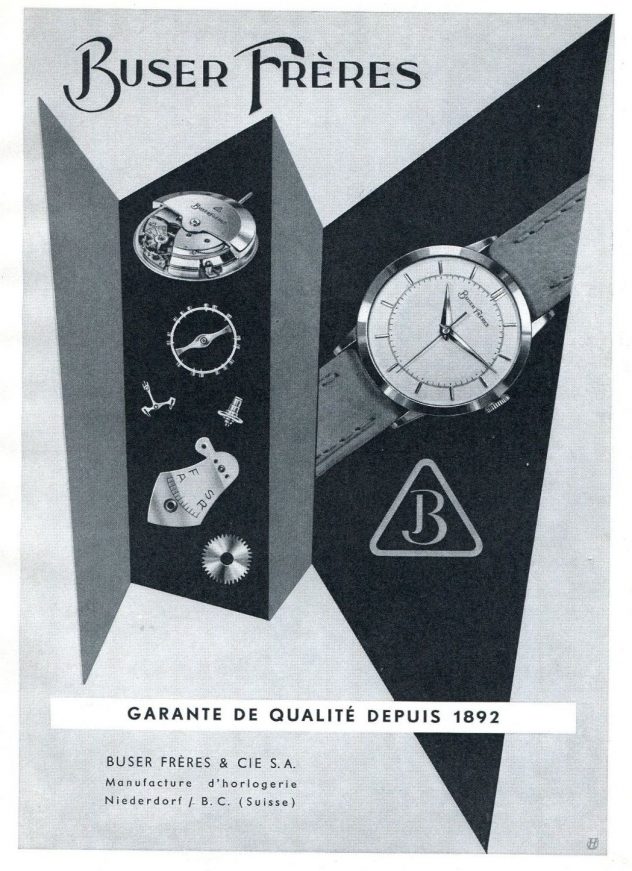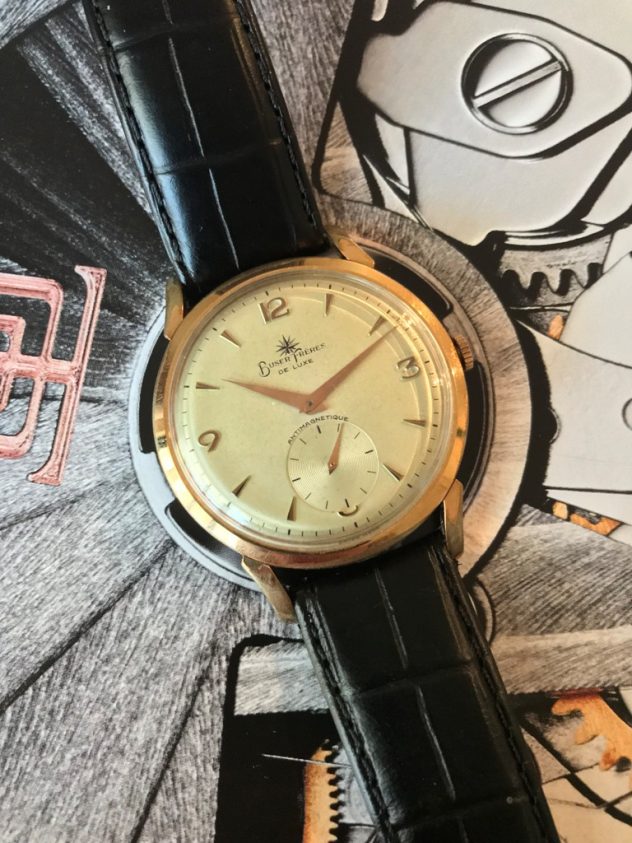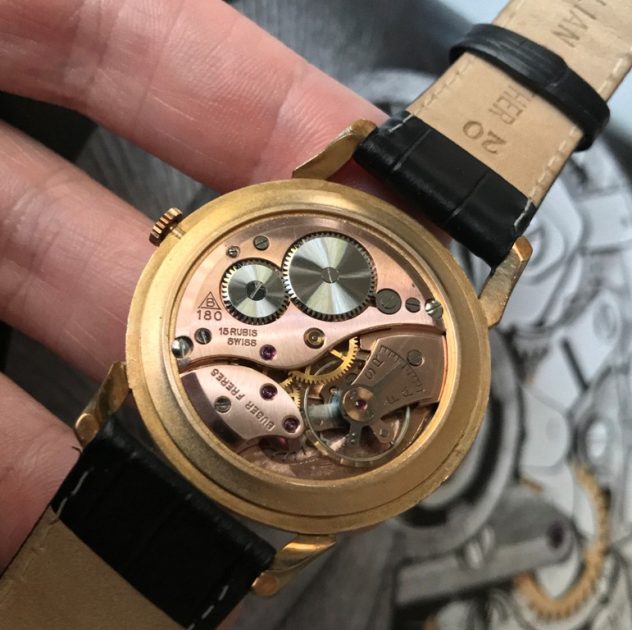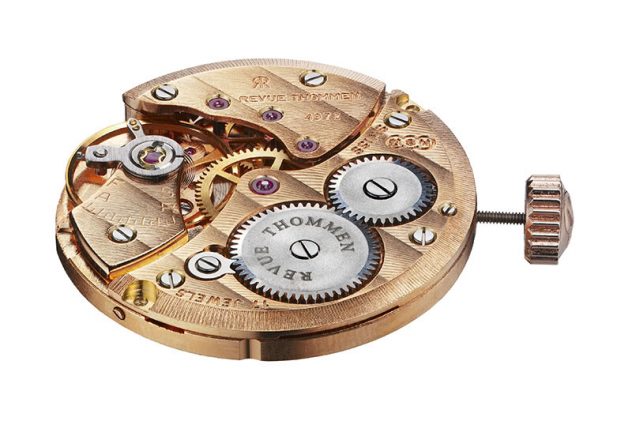There have been countless Swiss watch companies come and go over the last 200 years or so. Literally every single day I come across at least one defunct name I’ve never heard of before, and I know of many Swiss watch brands (not to mention German and French brands too)!
A sizeable proportion of these old brands were merely that – brands only, meaning that they did not manufacture any components of the timepieces they marketed. Rather, they designed (sometimes they didn’t even go that far…) or assembled watches from components supplied by other factories; a successful business model that continues today in the Swiss watch industry.

Buser Frères & Cie S.A., a family owned business whose origins began in 1892 in Niederdorf, Switzerland; were a true ‘manufacture d’horlogerie’. Buser designed and produced select components and ebauches in-house. In fact Buser were responsible for over 20 calibers, both manually wound and automatic, including early cylinder and lever movements, open face hunter movements and chronometer-grade movements . Buser movements can be recognised most commonly by their trademark capital ‘B’ within a triangle, and were utilised by Buser’s sub-brands (Nidor, Frenca, Esta, Neo, Tiptop, Buwat and others) and other watch companies such as Gruen.

Whilst Buser started off as an ebauche specialist, it wasn’t until 1916 that they were producing complete watches. Their finished timepiece capabilities ultimately included of course pocket watches and wrist watches; but also necklace watches and in-dash car clocks (possibly limited to the supply of movements to other car clock manufacturers). I believe Buser also manufactured their own cases and dials, although this is very difficult to verify due to there being little detail on Buser’s full watch production capabilities.
The vintage Buser Frères piece shown here, dating from the 1950s is powered by Buser’s nicely designed 13 ligne, 15 jewels, calibre 180 manual wind movement. At 38mm in diameter, this watch is large for its era. The beautiful dial has developed a lovely even honey patina over the years, and the slightly curved long lugs give the watch a very elegant look.

In 1961, Buser joined with Revue, Vulcain and Phénix to form Manufactures d’Horlogerie Suisse Réunis SA (M.S.R.). In 1973 Marvin also joined M.S.R. The Buser name started to take a back seat in watchmaking from there (as did Phénix), but Buser were reputed to have moved into pressure measuring instruments before seemingly disappearing as a company.
However, Buser’s cal. 180 lives on today as the beautiful Revue cal. GT82, found in modern Revue Thommen watches. And Nidor (Buser) pocket watch calibres from 1918 are used by Zeno-Watch Basel in their limited edition silver pocket watch range retailing for 3000-4000 Euros!

Buser Frères & Cie S.A. – a very interesting brand with a great history, but still one of the least known names in Swiss watchmaking.
By Adam – Mechanical_Time : https://www.instagram.com/mechanical_time/

Thanks for the chance to win!
How is today’s Vulcain linked to current MSR?
Modern day Vulcain are not directly linked to MSR any more. Vulcain are currently owned by a Luxembourg investor who also owns Anonimo. MSR are privately held and not in association with Vulcain.
I have a beautiful dainty ladies watch with Buser. 18c gold.
I am thrilled to learn the history of this company. Unfortunately the watch
No longer works. Do you think it’s possible to get it working again.
I think so yes.
You should try to talk with your watchmaker and he will probably have a solution.
I have a Buser 25 rubis but I cannot find any reference to it. Can someone help? Thanks
Maybe we can ask Adam.
You want to be in touch with him?
Brilliant as usual! I had a Nidor…
There is also a cal 180 but 17 jewels, don’t know which can be the main difference
[…] http://www.watchisthis.com/buser-freres-cie-s-a-a-brief-introduction/ […]
An excellent report on watch manufacturing. The Buser company, or NIDOR « for Niederdorf », was a very important employer in the area where I live (close to Basel). Niederdorf is located in the valley of Waldenburg which also had the nickname watch valley. ORIS and REVUE THOMMEN are the only watch manufacturers that have survived today… Thanks for the great work.
Elly Watch Chronometer is the name of the pocket watch, I inherited from my Grandfather. Work of Buser Freres, in 14 k gold, with NIDOR letters inside. I wish I could post some photos, can You give me advice about that? Also I would like to know from wich year is the watch, if somebody knows…?
Thanks in advance, Mario
Hi Mario,
Maybe you can share pictures with me directly and I will have a look.
Not sure I could find infos but never know…
If you want let me know if you have IG or FB… It will be easier to see the watch.
Best of life,
Jonathan
I’m looking at a BUSER PRECISION with a capital B in a triangle above near the top of the face and 17 JEWEL INCABLOC ANTIMAGNETIC below the center with SWISS at the very bottom. The gents watch is five (5) sided, a bit narrow near the bottom bit longer and a bit wider at the shoulder with the point at the top which hides the band attach point. Gold tone face without any numbers, just varied length gold tone markers at 1,2,4,5 and 7,8,10,11. The back is gold tone with only BUSER and EXPLORER engraved. Would you know the year and approximate value of this watch? Thank you.
I’m sorry but like that without a photo and reference it is not possible for me to give a price.